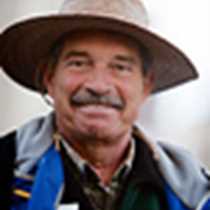Cockscomb Jaguar Reserve and Seine Bight, Belize
There are few places left on our planet where one can see and enjoy primary rainforest. Cockscomb Jaguar Reserve is one of them. Very little is missing from this tract of land, although early selective logging of the famous and valuable mahogany tree has altered the canopy to a certain degree. This logging had its heyday in the middle of the eighteenth century, during which time these huge trees were sent mostly to Europe for the furniture and boat-building industry. Very few of the enormous and majestic mahogany trees of the New World tropics escaped the broadaxe. Today, however, we explored a forest that has recuperated from man’s intrusion, and has regained much of its native flora and fauna. As we walked along tortuous paths, still wet from recent tropical rains, we found tracks of a jaguar and of a coatimundi, the latter a cousin of the northern raccoon. Numerous lines of leaf-cutter ants, their wide “highways” permanently engineered across grassy areas and our forest trials, fascinated us as we watched them carrying pieces of leaves and purple flowers many times their size. This “harvest” will be mulched and fed to an underground fungus that lives within their nest. The fungus, not the leaves, is the leaf-cutter ant’s principal food. Many colourful and secretive birds were seen, including tropical species such as trogons, antbirds, tanagers and the massive King Vulture. Also seen were neotropical migrants – those northern nesting songbirds which, like us, are spending their winter in warmer climes. Out-of-season rains have lit up this forest with flowers, including the unique blooms of a good number of trees. This was a special day for us…enjoying and learning about life within a tropical rainforest.
During the late afternoon we moved our ship to the vicinity of Seine Bight, a Garifuna village on the coast. This ethnic group had its origin from a slave shipwreck in the Caribbean. The survivors fled to the island of St. Vincent, later moving on to Honduras and then to Belize. They still retain many unique social customs, including their food, drumming and dancing. At the beach in their village we enjoyed an afternoon of refreshments, dancing and singing.
There are few places left on our planet where one can see and enjoy primary rainforest. Cockscomb Jaguar Reserve is one of them. Very little is missing from this tract of land, although early selective logging of the famous and valuable mahogany tree has altered the canopy to a certain degree. This logging had its heyday in the middle of the eighteenth century, during which time these huge trees were sent mostly to Europe for the furniture and boat-building industry. Very few of the enormous and majestic mahogany trees of the New World tropics escaped the broadaxe. Today, however, we explored a forest that has recuperated from man’s intrusion, and has regained much of its native flora and fauna. As we walked along tortuous paths, still wet from recent tropical rains, we found tracks of a jaguar and of a coatimundi, the latter a cousin of the northern raccoon. Numerous lines of leaf-cutter ants, their wide “highways” permanently engineered across grassy areas and our forest trials, fascinated us as we watched them carrying pieces of leaves and purple flowers many times their size. This “harvest” will be mulched and fed to an underground fungus that lives within their nest. The fungus, not the leaves, is the leaf-cutter ant’s principal food. Many colourful and secretive birds were seen, including tropical species such as trogons, antbirds, tanagers and the massive King Vulture. Also seen were neotropical migrants – those northern nesting songbirds which, like us, are spending their winter in warmer climes. Out-of-season rains have lit up this forest with flowers, including the unique blooms of a good number of trees. This was a special day for us…enjoying and learning about life within a tropical rainforest.
During the late afternoon we moved our ship to the vicinity of Seine Bight, a Garifuna village on the coast. This ethnic group had its origin from a slave shipwreck in the Caribbean. The survivors fled to the island of St. Vincent, later moving on to Honduras and then to Belize. They still retain many unique social customs, including their food, drumming and dancing. At the beach in their village we enjoyed an afternoon of refreshments, dancing and singing.




